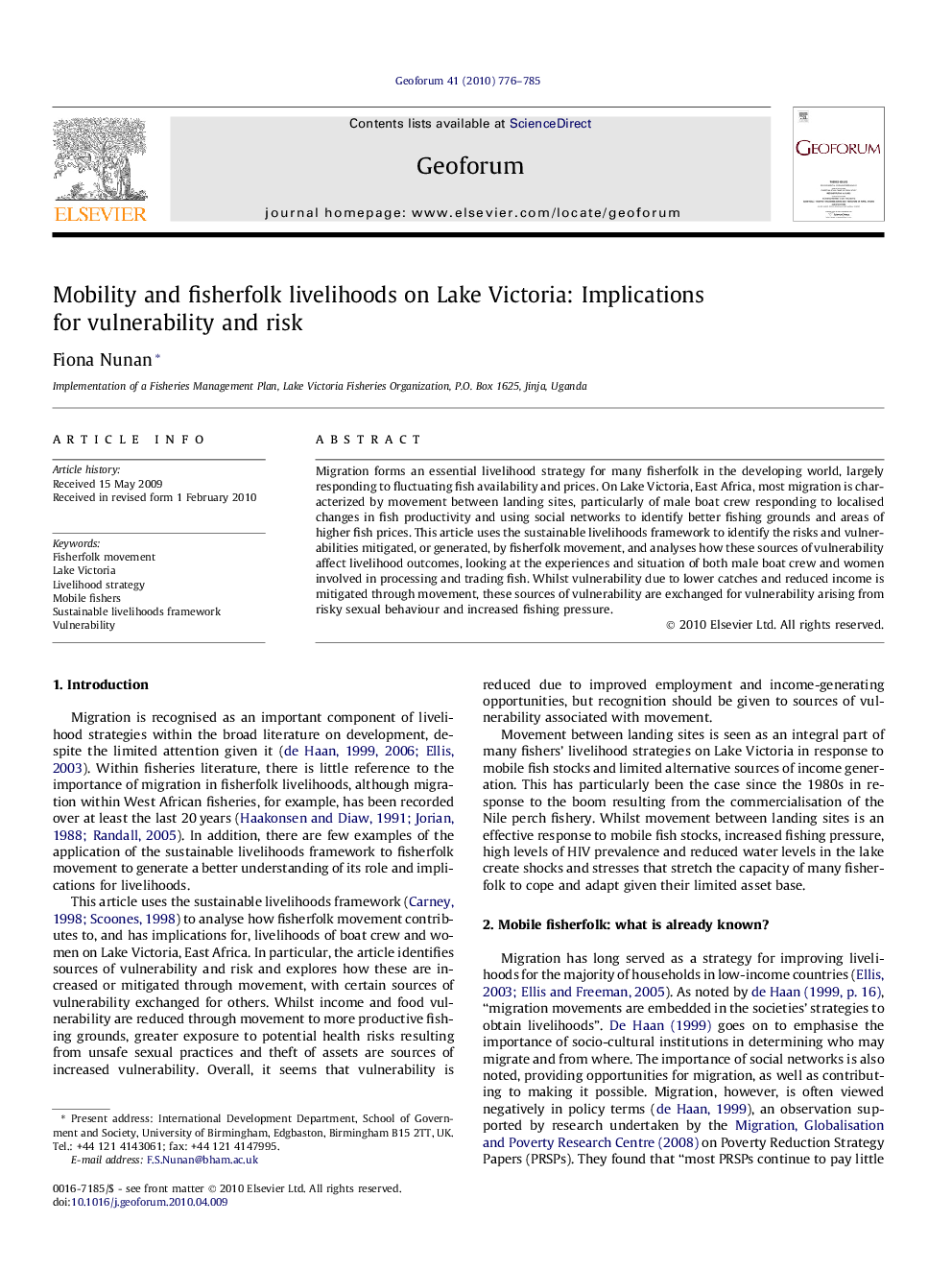| Article ID | Journal | Published Year | Pages | File Type |
|---|---|---|---|---|
| 5074459 | Geoforum | 2010 | 10 Pages |
Abstract
Migration forms an essential livelihood strategy for many fisherfolk in the developing world, largely responding to fluctuating fish availability and prices. On Lake Victoria, East Africa, most migration is characterized by movement between landing sites, particularly of male boat crew responding to localised changes in fish productivity and using social networks to identify better fishing grounds and areas of higher fish prices. This article uses the sustainable livelihoods framework to identify the risks and vulnerabilities mitigated, or generated, by fisherfolk movement, and analyses how these sources of vulnerability affect livelihood outcomes, looking at the experiences and situation of both male boat crew and women involved in processing and trading fish. Whilst vulnerability due to lower catches and reduced income is mitigated through movement, these sources of vulnerability are exchanged for vulnerability arising from risky sexual behaviour and increased fishing pressure.
Related Topics
Social Sciences and Humanities
Economics, Econometrics and Finance
Economics and Econometrics
Authors
Fiona Nunan,
